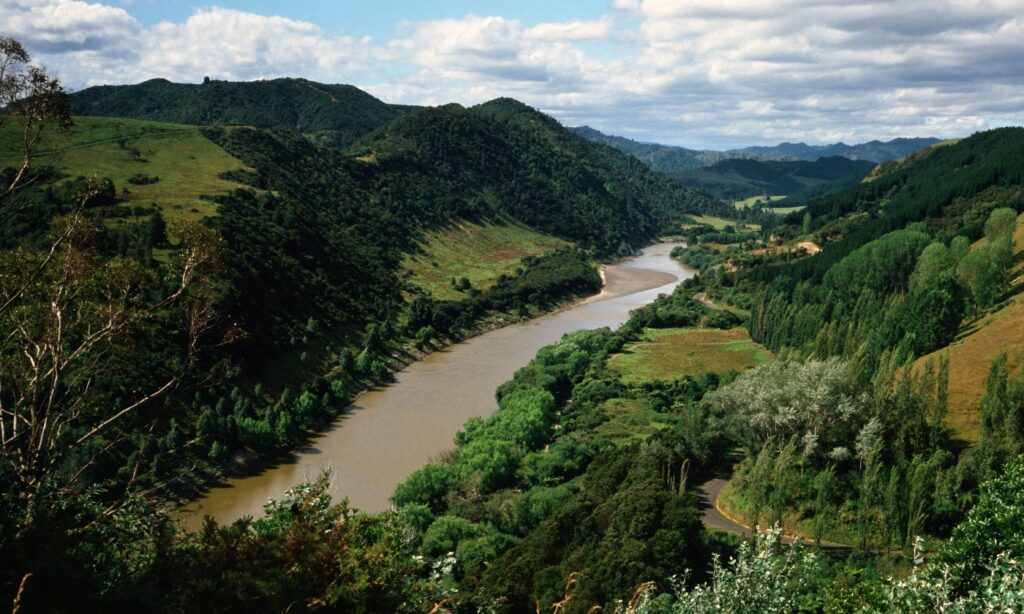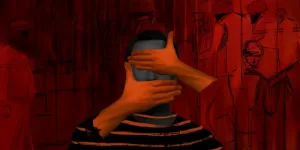In October 1971, a few months after international officials gathered in Iran to sign the Ramsar wetlands treaty, Christopher Stone was standing in front of his introductory property law class at the University of Southern California’s law school, trying to hold the attention of his restive students. Observing that the definition of property had changed radically over human history, transforming not only the distribution of power within society but society’s view of itself, he wondered aloud about the effects of a similarly radical redefinition of “rights.” What if legal rights were extended to, say, rivers? Or animals? Or trees? “This little thought experiment,” Stone recalled decades later, “was greeted, quite sincerely, with uproar.”
Class was soon dismissed—to the relief of the students and their professor—but Stone did not abandon his thought experiment. Instead, he called the law library’s reference desk and asked if there were any pending cases where the “rights” of a natural object might affect the outcome. Within half an hour, a librarian called back to suggest Sierra Club v. Hickel.
The case involved a proposed Walt Disney resort in Mineral King Valley, a wilderness area in the Sierra Nevada of California. The Sierra Club Legal Defense Fund had challenged the development permit that the U.S. Forest Service had granted to the Disney corporation, but the court that heard the case had ruled that the Sierra Club had no “standing”—because the club itself would not be “aggrieved” or “adversely affected” by the development, it had no right to sue. The club had appealed, and the case would soon reach the U.S. Supreme Court.
Stone hastily pulled together an essay for an upcoming issue of the Southern California Law Review. “I am quite seriously proposing that we give legal rights to forests, oceans, rivers, and other so-called ‘natural objects’ in the environment—indeed, to the natural environment as a whole,” he wrote. He was not, he emphasized, suggesting that no one be allowed to cut down a tree. “To say that the natural environment should have rights is not to say that it should have every right we can imagine, or even the same body of rights as human beings have,” he wrote. “Nor is it to say that everything in the environment should have the same rights as every other thing in the environment.”
Stone’s argument was that natural objects should not have to depend on the Sierra Club for legal standing, but should be accorded their own. If forests, oceans, and rivers possessed standing, Stone argued, court-approved human “guardians” could sue on their behalf, much as legal representatives can sue on behalf of incapacitated people or defunct corporations. These guardians would represent the interests of the natural objects, and the court would award any compensation to the object itself, perhaps in the form of funds for restoration.
Like the rights held by people—such as the right to vote and the right to own property—many of the existing protections afforded to natural objects are open to interpretation, and can be limited in certain circumstances. Legal standing for natural objects, Stone predicted, would allow their human advocates to spell out the consequences of such limitations, and elevate those consequences in the eyes of the courts and the public.
“Should Trees Have Standing?” was published, by design, in an issue of the law review for which Supreme Court Justice William O. Douglas had agreed to write a preface, and it found its way to its intended audience of one. Though the Supreme Court ruled against the Sierra Club in April 1972, Douglas cited Stone’s argument in the opening lines of his dissent. “Contemporary public concern for protecting nature’s ecological equilibrium should lead to the conferral of standing upon environmental objects to sue for their own preservation,” Douglas wrote. He concluded his dissent by quoting Aldo Leopold: “The land ethic simply enlarges the boundaries of the community to include soils, waters, plants, and animals, or collectively: the land.” (Public opposition to the Disney development continued after the court ruling, and company executives eventually lost interest in the project. The Mineral King Valley, now part of Sequoia National Park, remains undeveloped.)
Douglas’s unusual dissent caught the attention of the press, and Stone’s argument was widely ridiculed. “If Justice Douglas has his way— / O come not that dreadful day— / We’ll be sued by lakes and hills / Seeking a redress of ills,” one lawyer wrote. A Michigan appeals court later issued an entire opinion in doggerel, beginning with the lines “We thought that we would never see / A suit to compensate a tree.”
Stone’s essay continues to be argued over by law students, but 50 years after its publication, the notion of “a suit to compensate a tree” no longer seems so far-fetched. The U.S. Endangered Species Act, signed into law two years after Stone published his article, includes a provision that allows private citizens to sue over alleged violations of the act, and courts have since granted standing to spotted owls, red squirrels, Florida Key deer, and other endangered species as co-plaintiffs in citizen suits.
Charles Darwin, in The Descent of Man, observed that, over the course of human history, the “sympathies” of Homo sapiens have become “more tender and widely diffused, so as to extend to the men of all races, to the imbecile, the maimed, and other useless members of society, and finally to the lower animals.” History, of course, doesn’t move in a straight line, and it’s clear from our own time that sympathies can contract as quickly as they expand; in 2020, the U.S. Fish and Wildlife Service proposed to severely curtail the protections granted to birds more than a century earlier by the Migratory Bird Treaty Act. Yet for many groups of humans—women, children, people of color, people with disabilities, people without property—rights now widely considered inalienable were not so long ago seen as ridiculously out of reach. And our sympathies for other species are already being translated into legal rights.
In 2017, the Whanganui River—the longest navigable river in New Zealand—became a legal person. The Whanganui had been controlled by colonial and national governments since the mid-1800s, but the indigenous Māori people had never willingly given up their historical claim to the river, and it had become the subject of one of the country’s longest-running court battles. After Māori legal scholar Jacinta Ruru and her student James Morris noted in a 2010 article that Stone’s concept of legal standing for natural objects resembled the Māori concept of rivers as living beings, government officials and Māori leaders took up the idea: If they couldn’t resolve who owned the river, maybe the river should, in a sense, own itself. In 2014, the parties reached a settlement that recognized the Whanganui, its tributaries, and “all its physical and metaphysical elements” as “a living and indivisible whole.” Three years later, following a parliamentary debate conducted in Māori and English, the settlement became law.
The Whanganui, which has been dammed for hydropower, mined for gravel, dynamited for steamer passage, and polluted by urban effluent, will now be represented in court by two guardians, one chosen by the Māori groups most closely connected to the river and one by the national government—not unlike the arrangement Stone proposed. Exactly what legal personhood means for the Whanganui will surely be the subject of lawsuits to come. But the agreement changes the terms of those arguments. “The law, like our most fundamental societal stories, reminds us not only of what we are, but of what we aspire to be,” writes Holly Doremus. “Stories that become embedded in law are thus powerful forces in shaping society and social attitudes.” Often, they reinforce existing ideas. Sometimes, they expand our sense of the possible.
Though the Whanganui legislation and a growing number of laws like it vary in their particulars, they replace what Stone called “the view that Nature is a collection of useful senseless objects” with the general proposition that rivers, or forests, or animal species have value beyond the services they provide to humans, and that the responsibilities and costs of tolerating and sustaining them should be borne not by an unlucky few but by society as a whole.
New Zealand biologist and anthropologist Mere Roberts, herself of Māori descent, writes that the Māori worldview might be best described as “kin-centric,” in which humans are bound to one another, and to the rest of the living world, by a multitude of reciprocal relationships. Like Leopold’s concept of plain citizenship, this view recognizes that some of our relationships with other species are consumptive, some are predatory, and some inflict costs on both parties. It also recognizes that all have at least some potential for reciprocity, if only in the broadest sense of continuing the flow of energy within the biotic pyramid.
As individuals and as species, living organisms are part of interdependent communities, existing within a web of mutualisms that Leopold once imagined as “a universal symbiosis.” Given the harm our species is capable of doing to others, it’s understandable that over the course of the conservation movement, some have tried to sever our relationships with other species, drawing hard boundaries in an attempt to limit our exploitation of other forms of life.
Boundaries have been useful to conservation—and will continue to be. But the lesson of ecology, much like that of Aesop’s fables, is that human relationships with the rest of life are both inescapable and inescapably complex. The great challenge of conservation is to sustain complexity, in its many forms, and by doing so protect the possibility of a future for all life on Earth. And for that, there are no panaceas.
(Michelle Nijhuis is a project editor at the Atlantic, a contributing editor at High Country News, and an award-winning reporter whose work has been published in National Geographic and the New York Times Magazine. Article courtesy: YES! Media, a nonprofit, independent publisher of solutions journalism.)




